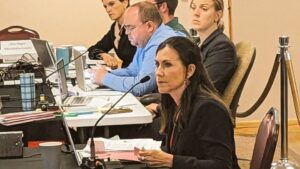
by Jordan Mason | Aug 3, 2023 | Archived
FORT PIERRE, S.D. (KELO) — A state legislator was the first of more than a half-dozen landowners Tuesday who told the South Dakota Public Utilities Commission why they don’t want Navigator’s proposed carbon-dioxide line to be permitted anywhere in the state.

Karla Lems, a state lawmaker from rural Canton, was first landowner to testify Tuesday against Navigator getting a permit from South Dakota Public Utilities …
Republican Rep. Karla Lems from rural Canton spent several hours on the witness stand. She was the prime sponsor of HB1133, which sought to ban carbon-dioxide from being defined as a common carrier under certain circumstances and, in turn, make a project no longer eligible to use eminent domain to force access through a property. The House of Representatives approved her bill, but a Senate committee killed it.
Lems’ testimony followed hours of explanation from a Navigator-affiliated official about safety steps that the company plans to take for the line. Lems said she hadn’t heard anything that reduced her concern. “It literally could wipe somebody out,” she said.
Lems said she tried to sell at auction some agricultural-zoned property in Lincoln County that carry what’s known as ‘housing eligibility.’ In Lincoln County, that eligibility would allow a house to be built on each 40-acre tract. The property was withdrawn from the market after attracting bids that were lower-priced than she expected.
Meanwhile, other properties without the prospect of what she described as a hazardous pipeline sold for higher amounts. Lens said she concluded that a potential CO2 pipeline hurt the market value of her properties.
Navigator wants to run about 13,000 feet of CO2 pipeline through other pieces of property that her family owns. She said the family leases its agricultural land to various tenants who pay according to productivity. “Therefore we’re taking land out of productivity. It’s less money for us. It’s less money for him,” Lems said.
Under cross-examination, Lems told Melanie Carpenter, one of Navigator’s attorneys from Sioux Falls, that she hadn’t tried to negotiate any easement terms or crop-damage payments with Navigator. Lems denied she was waiting for the PUC to decide whether to grant the permit.
Lems acknowledged that the Northern natural-gas pipeline runs through some of the family’s farm ground. She said the property was insured and farming took place over the line. One of her estimated 10-plus tenants had told he wouldn’t farm over a Navigator easement, she said.
She didn’t know how much of the corn that tenants grow on her family’s ground was sold to ethanol plants. Navigator plans to collect CO2 from the Valero ethanol plant at Aurora and POET ethanol plants at Chancellor and Hudson. The CO2 would be shipped to Illinois for disposal.
“I can tell you some of them said they’re not going to take it to the ethanol plant anymore,” Lems said. She acknowledged that her mother is an investor in an ethanol plant.
William Taylor, a Sioux Falls attorney representing several labor unions that would build the Navigator line, pointed out through his questions to Lems that numerous pipelines cross through Lems’ legislative district. He also noted through his questions that several of Sioux Falls’ higher-priced housing areas have pipelines running beneath them. Lems emphasized that those lines are for products that the public uses.
Taylor asked what Lems meant by “in the public use.” She answered, “I meant something that is used frequently by a majority of the public.” Under further questions, Lems acknowledged that several of the pipelines didn’t carry products that South Dakotans use.
Lems agreed with Taylor’s question that the PUC has no greater authority than the Legislature has given. He asked her to show the state law that allows the PUC to tell a company where to put its route. State law only lets the commission decide where a project shouldn’t go.
Said Lems, “I believe that if they (PUC) rule in favor of granting a permit for a project as a common carrier, it then allows that company to move forward and have a project.” Then the company can use eminent domain to force access through a property owner’s land, she said: “It’s a chain link.”
Commission chair Kristie Fiegen asked for more information about the history of Lems’ late father purchasing properties. Lems said some of the land has been held for 15 years waiting for “the right moment, the right person” to come along.
Regarding what sets CO2 apart from other commodities, Lems said, “I believe that we can see organically that it obviously is different.” She said there were no outcries against water or natural gas or electricity lines. “This is different. It is different because people don’t see it as a public use,” she said. She added, “You can clean up an oil spill. Yes, there are some dangers with natural gas, but not the possibility that you could see with a CO2 pipeline.”
In answer to a question from commissioner Gary Hanson, Lems agreed that she was aware that Navigator hasn’t pursued eminent domain against any property in South Dakota at this time. Commissioner Chris Nelson asked whether some things are more valuable than dollars and cents.
“Absolutely,” Lems said. She disagreed with the company being able to force its way onto private property and said the safety questions were “very, very huge.”
“We can have the best safety mechanisms in place, and we can still have an accident,” Lems said. Nor does she want her family or neighbors or anyone who buys property from the family her property to face that threat.
Lems also dislikes that BlackRock has provided financing for the project, in part because the investment group has recently established a financial relationship with the United Arab Emirates. “The foreign ownership itself is enough for me to say I don’t want to do business with this company,” she said. “I don’t feel my morals and values line up with that company and I don’t feel they are friendly to most of South Dakota’s patriotic values.”
People should have the right to say, No thank you, Lems said. Commissioner Nelson noted that one of the criteria the Legislature set for PUC permits is whether a trans-state facility would “substantially impair the health, safety or welfare of the inhabitants.”
“Well I definitely feel it could impair if we had a rupture,” Lems said. She said Navigator’s pipeline would require people to be on a higher awareness of a potential leak or rupture. “I don’t want to have to live that way, and I don’t want to put it on anyone else to have to live that way.” She said maybe “moral duty” needs to be added to the siting criteria.
Others who testified Tuesday against the project included Rick Bonander, R.J. Wright, Todd Dawley, Glenn Scott, Miles Lacey, Connie Beyer-LaLonde and Keith Myrlie.
“If you allow this to go through the commission could change the lives of hundreds of rural families forever,” Myrlie said.
“I just hope things work out for everybody,” commissioner Hanson replied.
The hearing continues at 8 a.m. CT Wednesday.
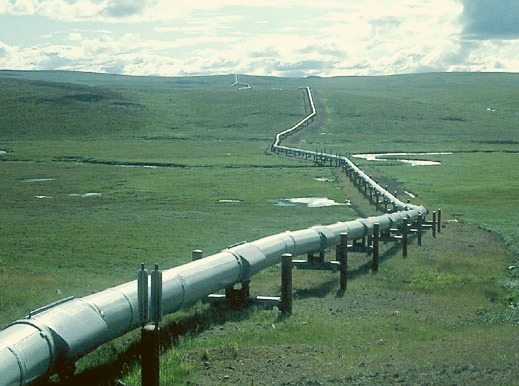
by Jordan Mason | Aug 3, 2023 | Archived
FORT PIERRE, S.D.–Opposing sides debated the safety of the proposed Heartland Greenway pipeline Wednesday during the sixth day of a permit hearing at the Casey Tibbs Rodeo Center in Fort Pierre.
Navigator CO2’s application to construct a pipeline carrying compressed carbon dioxide has some people worried about a leak.
The project includes “a laundry list of techniques” to ensure safety, according to William Byrd, president of RCP Inc., a pipeline consulting firm with a focus on federal regulations. And while Navigator CO2 has been late responding to some requests from regulators and has not yet completed all of its safety analyses, Byrd said it’s not “surprising to me that those things are going to continue to evolve.”
Joshua Haiar with South Dakota Searchlight reports that South Dakota is the first state to hold permit hearings on the 1,300-mile, five-state pipeline proposal. The company says that’s a sign it still has plenty of time to complete all necessary safety measures.
Byrd said the state’s three elected public utilities commissioners, who will ultimately vote on the permit, are really deciding on whether or not they “trust the operator” and trust the federal regulations that are already in place.
Brian Jorde, representing landowners along the proposed pipeline route, argued the answer to those questions is “no.” He said the company has never built a carbon pipeline, and federal regulators are currently reviewing their pipeline safety rules – a development that caused California to put a pause on the construction of carbon pipelines in that state.
The federal review follows a 2020 leak and carbon dioxide plume from a pipeline in Mississippi that led to the evacuation of approximately 200 residents and the hospitalization of 45.
The planned $3 billion pipeline would capture carbon dioxide emissions from 21 ethanol and several fertilizer plants. The gas would be liquefied and transported for underground storage in Illinois or for industrial uses such as oil extraction or dry ice. The project is eligible for up to $1.3 billion in federal tax credits annually, for removing carbon from the atmosphere that would otherwise trap heat and contribute to climate change. The pipeline route would run through 112 miles of eastern South Dakota, in Brookings, Moody, Minnehaha, Lincoln and Turner counties.
Company spokespeople earlier testified that federal regulators are aware of the project and have not reached out with concerns. The company found the annual likelihood of a leak or rupture to be 1% per 1,000 miles, based on federal data over the last 20 years.
Navigator CO2 has negotiated easements with about 30% of affected landowners and has offered an average of $24,000 per acre for rights to cross private land. The company has not yet used eminent domain, a legal process for obtaining access to land when landowners won’t grant it.
The hearing is scheduled to continue through Saturday, and a decision by the Public Utilities Commission is due by Sept. 26.
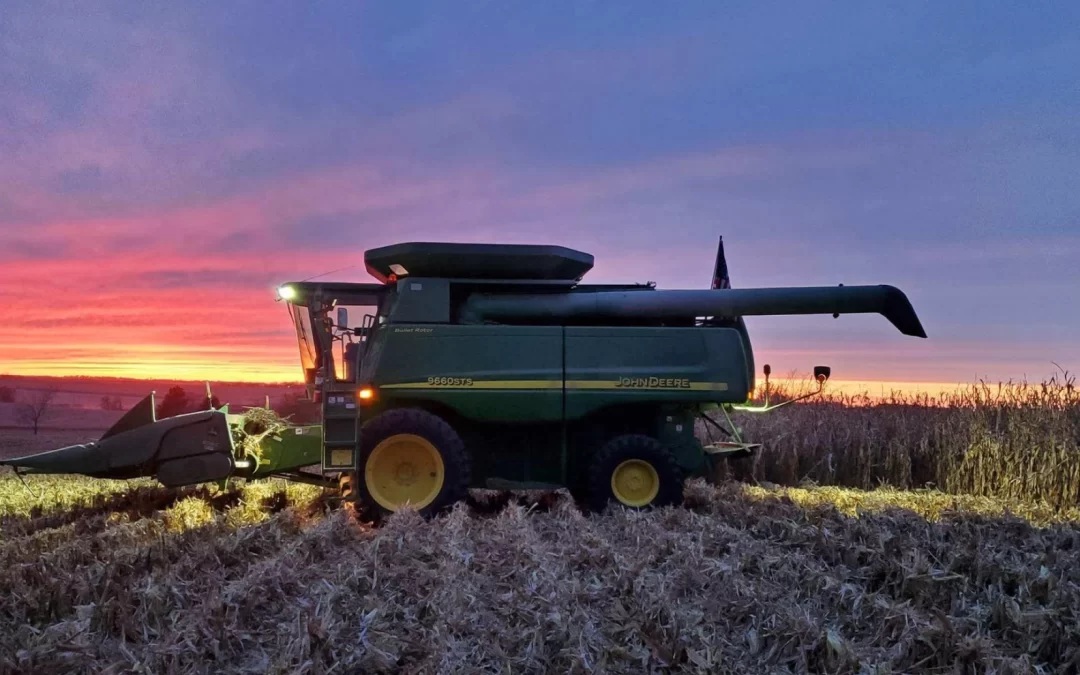
by Jordan Mason | Aug 2, 2023 | Archived
Pierre, SD (SDPB) – Taking the stand for the first time, landowners voiced concerns for safety and a drop in property value in front of the South Dakota Public Utilities Commission.
After a week of testimony and cross-examination, landowners took the stand Tuesday in Navigator CO2’s pipeline hearing.
State Rep. Karla Lems was the first landowner to testify. The Canton Republican was the prime sponsor of multiple pipeline-related bills last legislative session.
Lems’ bills were unsuccessful, but her push against pipelines continued into her testimony against Navigator’s pipeline. She said it is her duty to listen to the public.
“When I go to public hearings, and commission meetings, and all of these kinds of things, like I said before. Nobody’s in an uproar about natural gas, or water, or electric, we all understand we need those things,” Lems said. “This is a different cat, if you will, and one of the big factors with this specifically is safety.”
Navigator has been hesitant in producing pipeline safety information to the public. Rick Bonander is a landowner and testified to the public’s need for information.
“Today, they just released their emergency response plan. Why can’t they release the plume studies? You know, if they got something to hide, they’ve got nothing to hide so tell us what it is. There’s anxiety here, we want to know what’s going on,” said Bonander.
Landowners presented a unified front to the PUC commissioners. They said having a pipeline on their property not only limits their use of that property but also decreases their home and property value.
Navigator attorneys said the landowners represented by council have not attempted to communicate their concerns directly.
PUC commissioners thanked all landowners for testifying and will continue to hear testimony throughout the week.
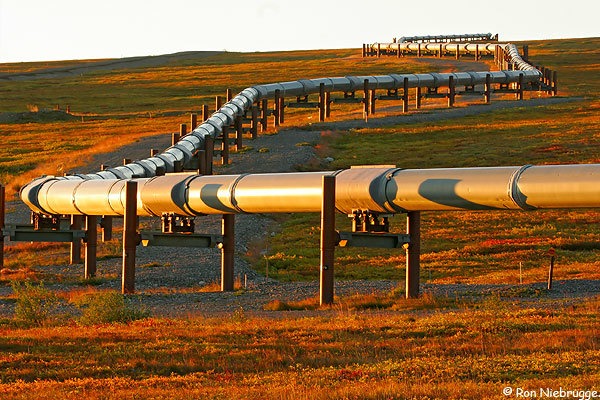
by Jordan Mason | Jul 27, 2023 | Archived
Fort Pierre, SD (SD Searchlight) – The “sensitive sites” potentially impacted by a carbon capture pipeline will remain confidential, for now. Meanwhile, modeling used to assess the impacts of a leak or rupture came under scrutiny Thursday during the third day of a permit hearing before state regulators at the Casey Tibbs Rodeo Center.

John Abraham, a professor at the University of St. Thomas, prepares to offer expert testimony July 27, 2023, in Fort Pierre during a Public Utilities Commission hearing on a proposed carbon dioxide pipeline. (Joshua Haiar/South Dakota Searchlight)
Stephen Lee is the executive vice president of engineering and construction for Navigator CO2, the company proposing the Heartland Greenway pipeline. Lee introduced maps marked as confidential for their focus on vital infrastructure. One “map overlay” includes the environmentally sensitive areas – including wetlands and waterways – that could be impacted during pipeline construction or in the case of an accident, Lee said.
Lee said the maps should remain confidential because they could be dangerous “in the hands of the wrong individuals” like “terrorists.”
More hearing coverage
Day 1: Carbon pipeline permit hearing kicks off with clashes on multiple fronts
Day 2: Economic projections questioned during second day of carbon pipeline hearing
Brian Jorde, an attorney representing landowners, failed to convince the three elected members of the Public Utilities Commission to make the map overlay public.
“I don’t think this is the time or place to solve that specific issue,” Commissioner Chris Nelson said, adding that there’s too little time to debate the issue during the permit hearing.
Jorde was not satisfied.
“This is the appropriate time to deal with that,” Jorde said. “This witness hasn’t identified anything that would make this confidential.”
Commission staff attorney Kristen Edwards said knowing where the environmentally sensitive sites are located would be informative.
“I would like to dig into that,” Edwards said.
James Moore, an attorney for the company, said the document was submitted on time and Jorde should have raised concerns prior to the permit hearing. Adam de Hueck, the commission attorney who is conducting the hearing, agreed.
“Mr. Jorde, I agree with Mr. Moore,” de Hueck said. “This was the whole point of pretrial conference.”
Nelson agreed with de Hueck, and acknowledged Edwards’ opinion that the information would be useful. “For the purposes of today, for this hearing, whether it’s public or not doesn’t make any difference,” Nelson said.
Jorde continued to press Lee, asking, “Is it best practice to be transparent and provide the counties with the best information you have now?”
“I can’t answer that yes or no,” Lee replied. “I disagree with the premise of the question.”
“Do you think that attitude is something the commission should take into consideration?” Jorde said.
“I would say that’s up to the commission,” Lee responded.
The proposed 1,300-mile, approximately $3 billion Heartland Greenway pipeline would link 21 ethanol plants (including three in South Dakota) and several fertilizer plants across five states. The project would include 111.9 miles of pipeline in eastern South Dakota, crossing through Brookings, Moody, Minnehaha, Lincoln and Turner counties. The estimated cost of the South Dakota portion of the project is $142 million. An additional $37 million would be spent on capture facilities.
The pipeline would capture carbon dioxide emitted by the plants and transport it in liquefied form for underground storage in Illinois, or for commercial and industrial uses. The project would be eligible for up to $1.3 billion in annual federal tax credits, which are intended to help fight climate change by incentivizing the removal of heat-trapping carbon dioxide from the atmosphere.
The project would create about 430 jobs in South Dakota during the construction phase, 20 jobs during operation, and $1.3 million in sales and gross receipts taxes during initial construction, according to a study commissioned by the company.
Lee testified that the company has offered landowners an average of $24,000 per acre in easement negotiations. Navigator has easements with about 30% of the owners of land the pipeline would cross. The company has not yet used eminent domain, a legal process to gain access to land when an agreement can’t be reached with a landowner.
The Heartland Greenway is one of two proposed carbon pipelines that would pass through South Dakota. A pipeline proposed by Summit Carbon Solutions is scheduled for a permit hearing in September.
Plume modeling debated
Knowing where sensitive sites are is an important part of modeling the impacts of a potential rupture, according to John Abraham, a University of St. Thomas professor and expert in thermal fluid sciences. He testified that, compared to alternative modeling methods, the software Navigator CO2 used to model the impacts of potential ruptures or leaks is “less accurate and often underpredicts how far a plume would go.”
“The Commission should not rely upon Navigator’s Phast modeling or the data and buffers that such flawed modeling provides,” Abraham said in written testimony. “Furthermore, newer, more accurate methods are available that can provide more accurate concentration calculations.”
Opponents have concerns about carbon dioxide plumes from potential pipeline leaks. In 2020, a leak in a carbon pipeline in Mississippi caused the evacuation of about 200 people and sent 45 to the hospital.
Moore said the models Abraham prefers are more time consuming and difficult. Abraham disputed that.
“In some instances, they can be,” Abraham said. “But they are far more accurate, and in many cases, they are not time consuming.”
Abraham said unreliable modeling was a reason the Mississippi incident was as severe as it was, saying the model used for that pipeline underestimated the plume.
“If you are using a tool that’s been shown not to work, and better tools exist, then it’s either bad science or it’s not science,” Abraham told Moore when asked if the modeling submitted was scientific.

The route of the proposed Heartland Greenway pipeline. (Courtesy of Navigator CO2)
Private session
The hearing went into a private session during a line of questioning about materials the commission deemed confidential. Reporters and the public were required to leave the room.
Following that, Edwards asked Abraham if a setback of about 400 feet would be adequate. Setbacks are minimum distances between pipelines and areas such as property lines, buildings and infrastructure.
“It’s my opinion, that would be inadequate,” Abraham said.
Commissioner Kristie Fiegen asked Abraham how he would have conducted the modeling.
“I would contract with a university here in South Dakota,” Abraham said. “Why would you hire a guy in Minneapolis?”
Abraham later said, “If I knew a pipeline was in a certain area, that would impact my decision to move into that area.”
The company acknowledged the pipeline comes with potential hazards, such as ruptures.
“Could such an explosion be fatal to those nearby?” Jorde asked Lee.
“Any release of energy in a nearby vicinity could be dangerous,” Lee replied. He said the plumes would be “mildly toxic,” and “we have 24/7, 365 monitoring of our system.”
Federal safety review
Lee later said the company has already run more than 225 models, and the company will begin to incorporate the model Abraham suggested. However, the company has not yet selected who it will contract with to run the new software.
“We’re still early in the process,” Lee said, alluding to permit hearings that haven’t yet occurred in other states.
Federal regulators are reviewing the safety standards for carbon capture pipelines. The current rules for the pipelines are inadequate, said Carolyn Raffensperger, executive director of the Science and Environmental Health Network, at a separate, recent meeting about the regulations.
Jorde referenced the federal review and asked Lee, “Wouldn’t it be reasonable to wait for the federal regulators to weigh in on those standards?”
Lee said federal regulators are aware of the project and have not reached out with concerns. He said the company found the likelihood of an incident to be 0.0011 percent per mile, per year, based on federal data over the last 20 years.
Hearing recesses until Monday
In addition to Thursday’s testimony, commissioners determined when they’ll consider preempting recently adopted Minnehaha County and Moody County setback ordinances. The commission will take up that issue Aug. 24-25.
Navigator CO2 thinks the distances the counties have settled on are too far, and is requesting the commission overrule those distances.
Attorney Alex Hagen represented Minnehaha County during Thursday’s hearing. He said the company could have chosen a route that would have met Minnehaha County’s setbacks for the pipeline. And he suggested the only reason it didn’t is because it would be expensive.
“Cost is just one of several things we assess,” Navigator’s Stephen Lee replied.
At the end of Thursday’s proceedings, the hearing recessed until Monday.
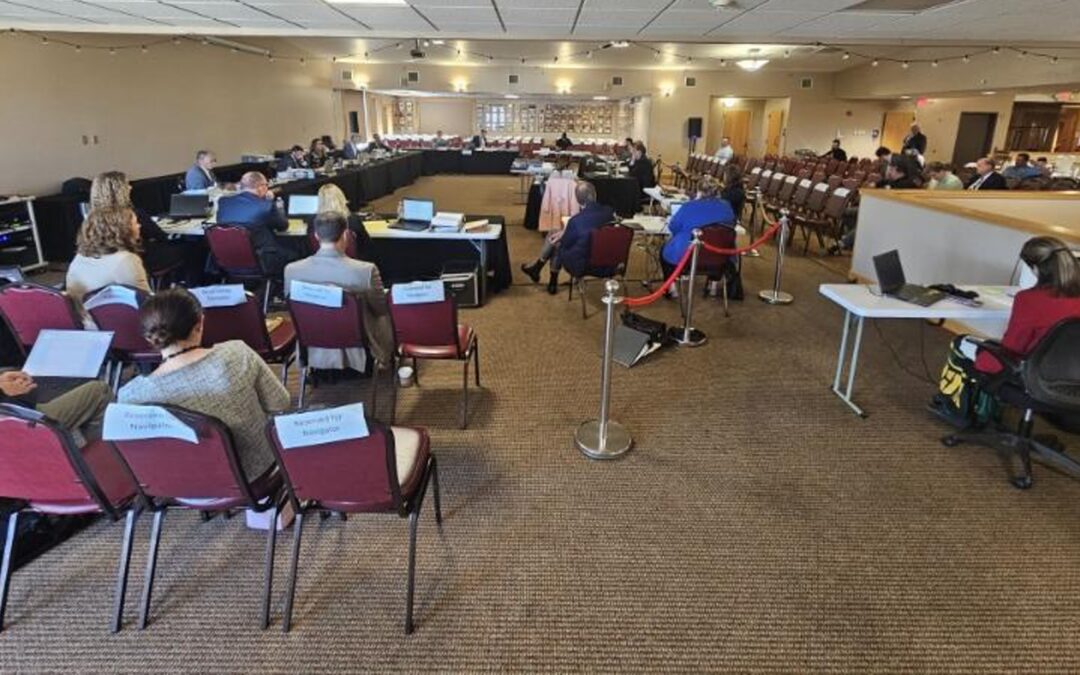
by Jordan Mason | Jul 26, 2023 | Archived
SIOUX FALLS, S.D. (Dakota News Now) – Wednesday was the second day of testimony for the Navigator CO2 pipeline application in South Dakota.
Members of the Public Utilities Commission asked tough questions regarding safety and regulations. Some commissioners voiced concerns about approving the pipeline before new safety regulations are announced next year that could allow Navigator’s operations to be grandfathered in.
The PUC also voiced concern over Navigator not releasing the diameters of the pipeline route or their computer-generated “rupture dispersion model.”
“So I think it relates to the fact that those plans are governed, their preparations are governed by PHESMA, and that PHESMA has personnel dedicated to the review and inspection of and providing comments on those plans,” said Mark Hereth, a consultant for Navigator.
According to Navigator’s testimony at the hearing, thirty percent of South Dakota landowners who are on the path of the pipeline have signed easements for the project.
A Navigator spokesperson tells Dakota News Now that every landowner across the corridor received a letter that described a desire for voluntary easement. The letter also included the possibility of eminent domain:
“Our goal is to reach voluntary agreements with all landowners along the project route, though if we are unable to do so we may seek to exercise the right of eminent domain,” the Navigator letter states.
Testimony continues on Thursday.
Copyright 2023 KSFY. All rights reserved.









